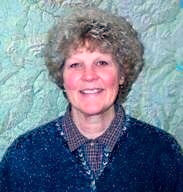Ruth Lambert, Ph.D., Cultural Program Director, San Juan Mountains Association
 Ruth Lambert is the cultural program director at the San Juan Mountains Association, a local educational non-profit that works with volunteers to conduct stewardship programs and projects on public and other lands. She has been at SJMA for 13 years. Prior to that, she worked for the federal government at the Grand Canyon Monitoring and Research center where she directed the cultural program and worked with archaeologists, cultural preservationists, and Indian tribes. She has a doctorate from the University of New Mexico in Anthropology. Lambert has worked in the southwest for more than 25 years conducting anthropology, archaeology, and history projects. She is particularly interested in ethnic diversity and the often overlooked contribution that these groups make to our collective history. Her current research projects involve Hispano history in her area and small rural historic cemeteries. She lives in Durango, Colorado.
Ruth Lambert is the cultural program director at the San Juan Mountains Association, a local educational non-profit that works with volunteers to conduct stewardship programs and projects on public and other lands. She has been at SJMA for 13 years. Prior to that, she worked for the federal government at the Grand Canyon Monitoring and Research center where she directed the cultural program and worked with archaeologists, cultural preservationists, and Indian tribes. She has a doctorate from the University of New Mexico in Anthropology. Lambert has worked in the southwest for more than 25 years conducting anthropology, archaeology, and history projects. She is particularly interested in ethnic diversity and the often overlooked contribution that these groups make to our collective history. Her current research projects involve Hispano history in her area and small rural historic cemeteries. She lives in Durango, Colorado.
What led you to your field?
My field is anthropology. My interest in archaeology, history, and the diversity of culture has led me to my past and current jobs.
How does what you do relate to historic preservation?
My current project and recent past projects have dealt with diverse groups that have contributed to our history. The contributions of minority and ethnic groups and religions are often forgotten in accounts of our history.
Why do you think historic preservation matters?
Historic preservation is important to record our collective history. Preservation of elements of minority and ethnic groups (structures, traditional places, and practices) is very important to celebrate and appreciate their contributions to our history.
What courses do you recommend for students interested in this field?
I strongly recommend courses in anthropology because it helps to develop appreciation for diverse cultures and promotes concepts of context. I also recommend general and specific history classes. Where available, I think historic preservation classes are important
Do you have a favorite preservation project? What about it made it special?
I have two favorite projects, and fortunately I'm working on both of them now. The first is the documentation of Hispano arborglyphs (tree carvings) found along the historic sheep herding driveways as herders drove their flocks between low winter pastures and high summer pastures. The project involves historic archaeological documentation of herding camps, historic contextual Hispano research, and collection of oral histories from herder families.
The second project involves the documentation of small rural cemeteries in La Plata County, Colorado, where I live. History students are helping in the recording of visible tombstones, historical research into burial records for the cemeteries, and the development of the project report.
Both of these projects appeal to me because it is important to capture the story and information before the arborglyphs are gone and the historic tombstone markers are illegible.
How do you think the national historic preservation programs help your community?
Historic preservation programs are worthy in and of themselves. This is our history, and we honor those that have gone before when we preserve history.
Historic preservation is critical for many tourism efforts. After all, every place has a unique past with historic resources. It is short sited to not celebrate and publicize that history. However, along with promoting history, there must be preservation efforts (or there won't be anything to promote in the future).
Do you have advice for novice preservationists?
Yes. First, become knowledgeable either through your education and/or with experience. Secondly, find a project that is worthy of you and commit to it. Lastly, no is never the final acceptable answer. If necessary, revise, re-think, re-group, re-frame the project - but don't give up.
The ACHP's mission is "preserving America's heritage;" can you give us an example of how your community is preserving its heritage?
Our community has a strong network of preservationists that work at museums, non-profits, and community groups. Because we are a rural, relatively isolated area with about 17,000 people, our strongest asset is our preservation network.
How does cultural resource stewardship play a role in historic preservation?
My organization, the San Juan Mountains Association, has developed and led projects that involve volunteers in hands-on projects. Volunteer participation and education is one of the best ways to develop awareness of the importance of cultural resources. Awareness and education often lead to appreciation, and appreciation offers the best likelihood of preservation.
Read more Q&A stories about the preservationists in your neighborhood!